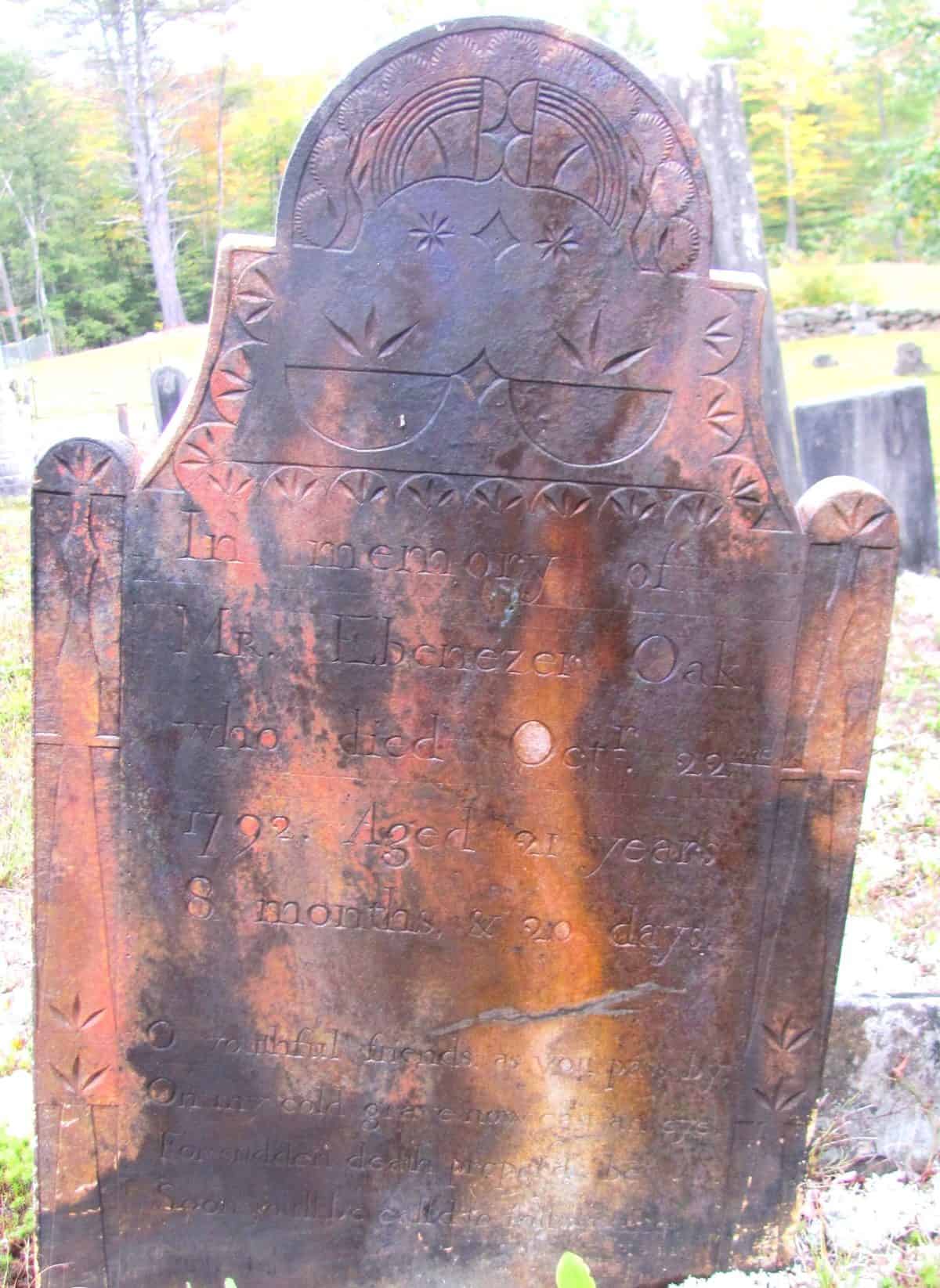
Here’s another newspaper clipping from Mary Harris’ scrapbook. It dates to 1907. I found the technical language used to describe different jobs particular to the quarrying industry, interesting. The Davis Quarry is up Quarry Road in Chester.
In West Cemetery in Athens, are a number of soapstone gravestones. West Cemetery is up an old road on the crest of a hill. It’s a beautiful resting place.
Danny and I have toured this cemetery and noticed some of the soapstone gravestones have rust colored stains. We wondered why. I’ll bet it’s the diamonds and yellow jackets you’ll read about below:
About a year ago the Union Soapstone Company leased the property known as the Goodrich Quarry, which lies near the boundary line between Athens and Grafton, in the southern part of Vermont, ten miles from the soapstone works at Chester.
The property has been in the possession of the Goodrich family for a great many years. The present owners are T.W. Goodrich of South Bend, Ind., and his brother Edward Goodrich of Exeter, N.H.
This quarry is in Athens; another, a few rods from it, known as the Smith and Butterfield Quarry, is partly in Athens and partly in Grafton, as has been determined by a recent survey.
The latter, frequently called the “lower” quarry, lies idle, as it has for the past 25 years. The former, the “upper” quarry, was leased and worked at one time by the firm of Smith & Butterfield. Later, it was run for three or four years by Williams & Co of Francestown, N.H. Work upon it was discontinued ten years ago, and was not resumed until the quarry was leased last year by the Union company.

That company, after several months of prospecting in the vicinity, began operations at the Goodrich Quarry some time in August. The work for a few months was mostly blasting, for the body of soapstone, with a front 12 feet high and 80 feet long, lay under 40 feet of “hard-rock.” Such, at least, was the appearance at first, but the “hard-rock” is found to decrease somewhat in depth the farther back it goes, while the depth of the soapstone increases.
Sufficient space having been cleared by the middle of November, stone cutting began, and several hundred tons of soapstone have since been cut out. Twelve men are employed at present. The prospects are that the business will be increased considerably in the near future.
The Union Soapstone Company lately obtained a new lease of the rich soapstone quarry at Chester, known as the Davis Quarry. In their mills at Chester Depot, tubs, sinks, griddles, footstones, register frames, and all other articles made of soapstone are manufactured.
Located near the soapstone mills at Chester Depot are mills for grinding waste pieces of soapstone into a fine dust that is used for many purposes.
In technical language, the men who do the general work around a quarry are “yard help.” The steel drills, 7 or 7 1/2 feet long, sharpened at both ends so they are reversible and weighing about ten pounds each, which are used for cutting soapstone, are “cutting bars,” and a short drill for the same purpose is a “chub.” The excavation, which yarns more and more widely as the work progresses, is the “pit,” while the conveyance that swings from the boom of the derrick and is loaded many times a day with refuse is the “boat,” and the rope for guiding that sort of airship the “tag rope.” A “goose” is an implement used for getting water out of a channel. “Diamonds” or “yellow jackets” are the smooth, shiny cubes, as hard as flint, which are sometimes found in soapstone, which, being ruinous to drill points, are the especial detestation of stone cutters. It takes several months to learn to cut soapstone. Cutters are paid $2 and $2.25 a day and yard help $10 a week. A heavy pair of oxen is used for drawing refuse to the dump, and four or six horses on the stone team that draws the soapstone to the mills. Thousands of tons of soapstone, in blocks averaging perhaps three tons each, have been drawn over the old “ledge road” to be sawed into slabs and made into tubs, etc., in the mills, run by water power, located at Cambridgeport. Those mills are not in use at present, the stone from Goodrich Quarry being drawn to the mills at Chester Depot.
This week’s old saying: “If you want to be rich, stay married.”